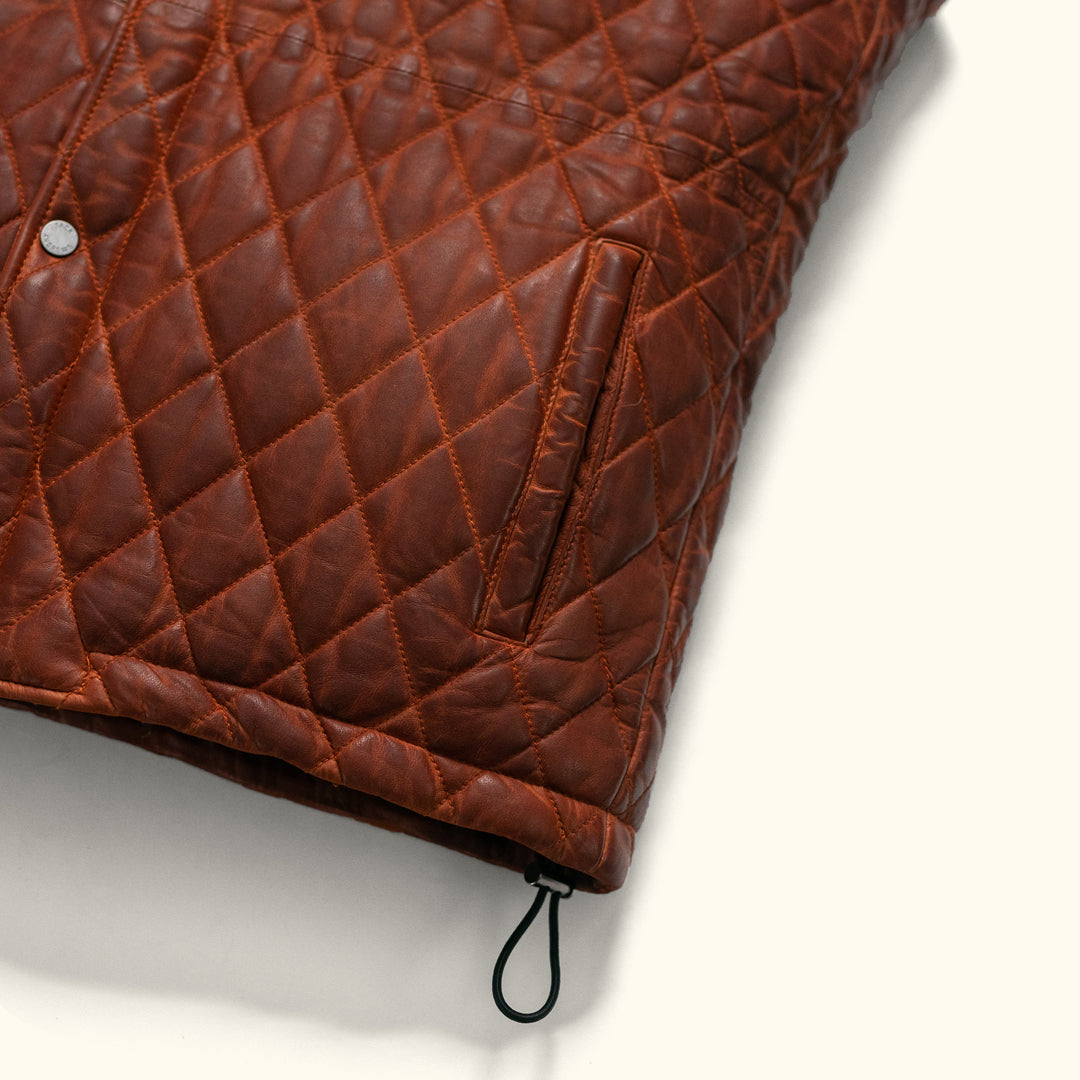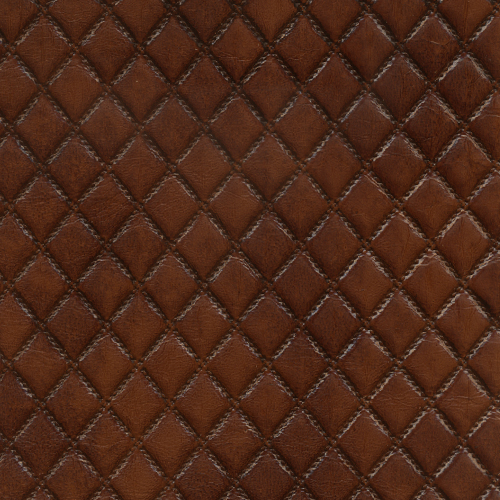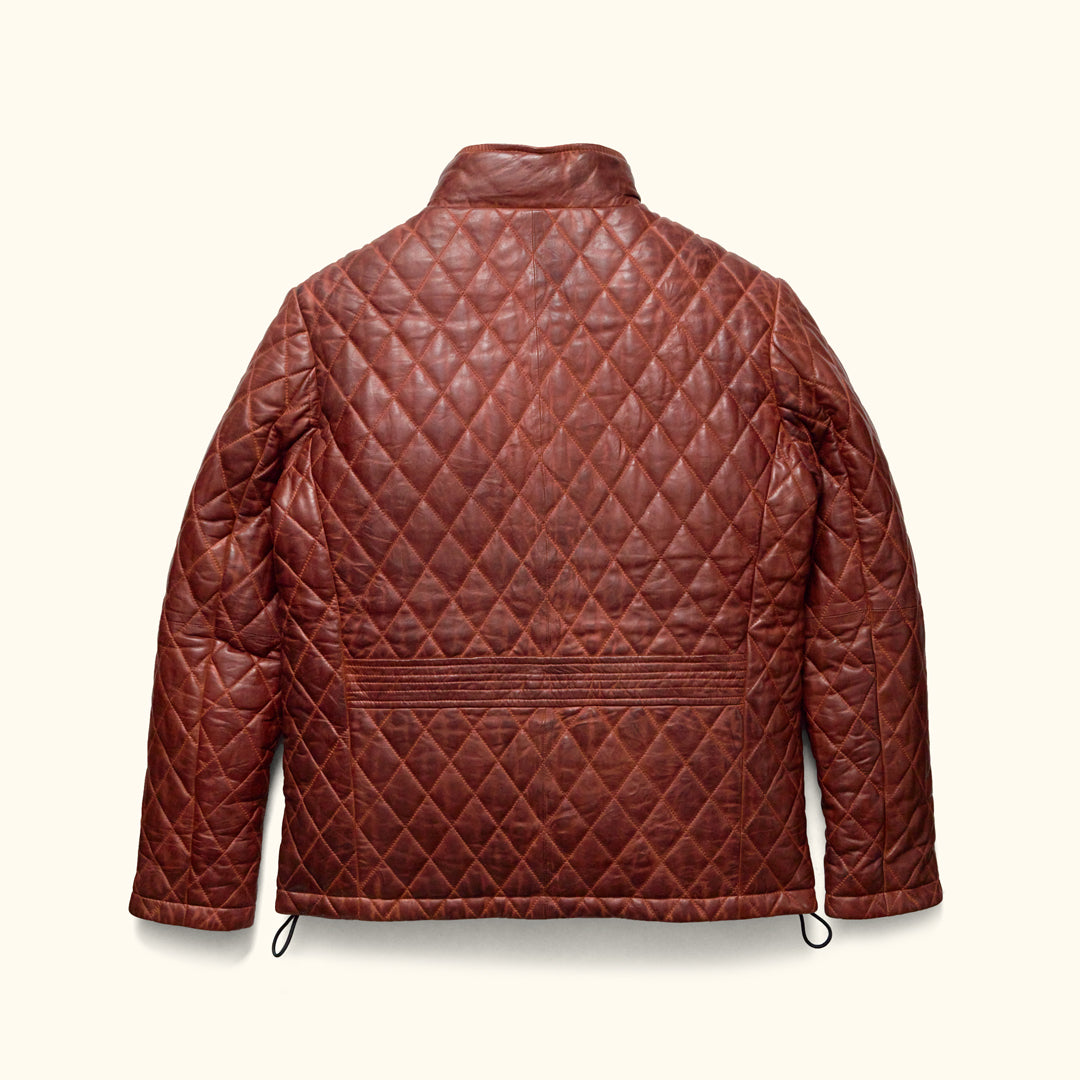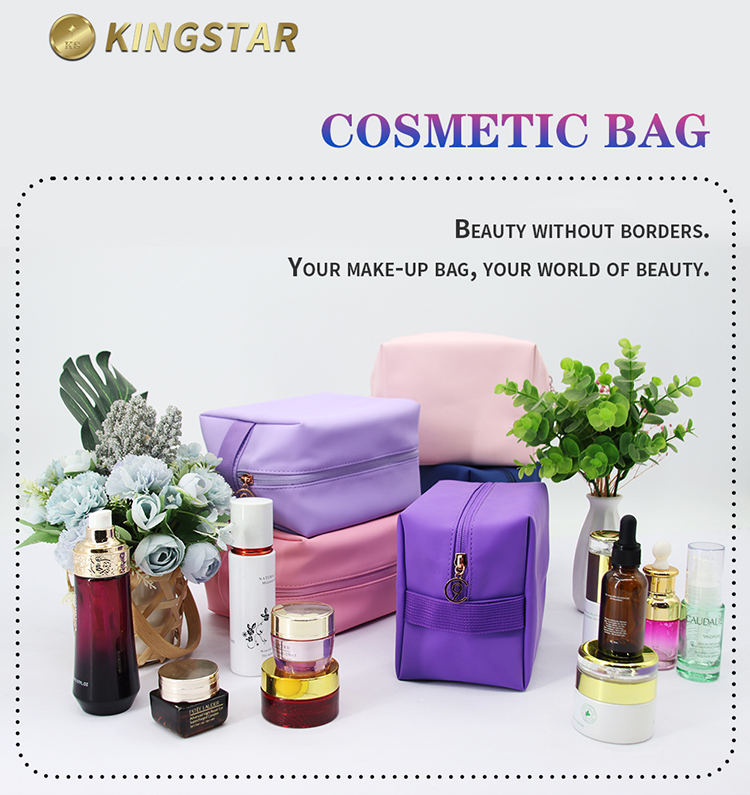Quilted leather is a material featuring a top layer of leather stitched with padding, creating a raised, ‘puffy’ pattern for texture and durability.

This iconic material is more than just a pattern; it represents a fusion of artistry, functionality, and enduring style. Its unique three-dimensional texture not only adds visual depth but also enhances the material’s resilience, making it a preferred choice for luxury goods that are both beautiful and built to last. Understanding its characteristics, history, and applications reveals why it remains a symbol of sophisticated taste.

Table of Contents
- The Defining Characteristics of Quilted Leather
- How Is Quilted Leather Made? The Art of Stitching and Padding
- A Rich History: The Origins of the Quilted Technique
- Common Patterns and Styles in Leather Quilting
- Why Is Quilted Leather Considered a Luxury Statement?
- Applications: Where You Find Quilted Leather Today
- Caring for Your Quilted Leather Goods
- Frequently Asked Questions About Quilted Leather
The Defining Characteristics of Quilted Leather
At its core, quilted leather is distinguished by its unique, three-dimensional surface. Unlike flat leather, it has a signature padded texture created by stitching together at least two layers of material with a soft wadding or foam layer in between. This construction gives it a plush, pillowy feel that is instantly recognizable both by sight and touch. The stitching itself forms a distinct pattern, which serves as a primary design element.

The visual appeal is a key characteristic. The raised, geometric shapes—most often diamonds, squares, or channels—catch the light in a way that flat leather cannot, creating subtle highlights and shadows that enhance the material’s richness. This textural depth adds a layer of complexity and elegance to any item it adorns. Furthermore, the quilting process imparts a unique structure to the leather, making it feel more substantial and robust without sacrificing its inherent softness and flexibility.
How Is Quilted Leather Made? The Art of Stitching and Padding
Creating authentic quilted leather is a meticulous process that demands precision and high-quality materials. It is a testament to skilled craftsmanship, where every step is crucial to achieving the final luxurious product. The technique transforms a simple hide into a sophisticated, structured textile.
Selecting the Right Materials
The journey begins with the selection of the leather itself. Softer, more pliable leathers such as lambskin, calfskin, or high-grade Nappa leather are often preferred because they respond well to the stitching and padding process, resulting in a softer puff. The quality of the hide is paramount, as any imperfections can be magnified by the quilting pattern. The next component is the padding, or wadding, which is typically a thin layer of foam, cotton, or synthetic fiber. The thickness and density of this padding determine how pronounced the “puff” of the quilting will be.
The Quilting Process: Stitch by Stitch
Once the materials are chosen, the layers are assembled: a backing fabric, the padding, and the top leather hide. These layers are then stitched together. While this can be done using advanced, computer-guided machinery for perfect uniformity, high-end artisanal pieces may still feature hand-guided stitching. The artisan or machine follows a predetermined pattern, with the diamond stitch being the most iconic. The tension of the thread must be perfect; too tight, and it can pucker the leather, too loose, and the quilted effect will lack definition.
The Final Touches and Finishing
After the quilting is complete, the leather panel is cut to the required shape for the final product, whether it’s a handbag, a jacket panel, or a seat cover. The edges are carefully finished to ensure durability and a clean look. Depending on the desired outcome, the leather may undergo additional treatments, such as coloring, conditioning, or the application of a protective topcoat to enhance its luster and resistance to wear.
A Rich History: The Origins of the Quilted Technique
While often associated with 20th-century fashion, the technique of quilting fabrics for warmth and protection is centuries old. Its application to leather, however, gained prominence in different spheres before becoming a fashion staple. Early uses can be traced back to equestrian pursuits, where quilted patterns were used in horse saddles and jackets worn by jockeys. The stitching provided not only padding and comfort but also reinforced the material, making it more durable for rugged use.
The watershed moment for quilted leather in high fashion arrived in February 1955. Inspired by the practical and comfortable jackets of stable hands, Coco Chanel introduced the 2.55 handbag. This revolutionary design featured quilted leather, a material choice that was both aesthetically pleasing and functional. The quilting gave the bag structure and volume while maintaining the softness of the lambskin. This single design cemented quilted leather’s status as a symbol of timeless, understated luxury, and its influence continues to dominate the world of high-end accessories today.
Common Patterns and Styles in Leather Quilting
The stitching pattern is the most defining visual element of quilted leather. While variations are endless, a few classic styles have become industry standards, each offering a different aesthetic.
| Pattern Name | Description | Common Applications |
|---|---|---|
| Diamond Stitch | The most iconic pattern, featuring a grid of intersecting diagonal lines that form diamond shapes. It is synonymous with classic luxury. | Handbags, wallets, luxury car seats, and classic leather jackets. |
| Channel Stitch | Features parallel vertical or horizontal lines of stitching, creating clean, elongated “channels.” This style offers a more modern, streamlined look. | Furniture, automotive interiors, and minimalist-style jackets and bags. |
| Square / Box Stitch | A straightforward grid of horizontal and vertical stitches that form perfect squares. It provides a structured, geometric appearance. | Modern furniture, accent panels on accessories, and motorcycle gear. |
Why Is Quilted Leather Considered a Luxury Statement?
Quilted leather’s association with luxury is not arbitrary; it is rooted in its complex creation, superior feel, and cultural significance. Several factors contribute to its elevated status in the world of premium materials.
Unmatched Aesthetic Appeal
The three-dimensional texture of quilted leather is visually captivating. It adds depth, sophistication, and a sense of opulence that flat materials lack. Its structured yet soft appearance signifies a product that has been thoughtfully designed and crafted. This timeless elegance ensures that products made from it remain stylish for decades, transcending fleeting trends.
Enhanced Durability and Structure
The stitching in quilted leather serves a functional purpose beyond just aesthetics. It reinforces the leather, distributing stress across the surface and making it more resistant to stretching and sagging over time. This added resilience means that quilted leather goods, particularly those in high-use items like bags and upholstery, maintain their shape and integrity for longer. This commitment to longevity is a hallmark of a true luxury item.
The Tactile Experience
Luxury is often defined by how an object feels. Quilted leather offers a unique tactile experience—it is soft, plush, and inviting to the touch. The padded sections provide a pleasing sensory feedback that speaks to comfort and quality. This focus on the user’s experience is a critical component of what separates a premium product from a standard one.
Applications: Where You Find Quilted Leather Today
Thanks to its blend of beauty and brawn, quilted leather is utilized across a wide range of high-end products where both style and performance are paramount. Its versatility allows it to be a centerpiece in fashion, automotive design, and interior decor.
In the world of fashion, it remains a dominant force. It is most famously used in luxury handbags, from iconic classics to modern interpretations. Beyond bags, it is a popular choice for accessories like wallets, belts, and phone cases. In high-end apparel, brands dedicated to superior craftsmanship, like Beld-Tura Leather, recognize that such details elevate a piece from a simple garment to a statement of timeless style. You will find quilted panels on the shoulders and elbows of premium leather jackets, providing both a classic aesthetic and extra padding.
The automotive industry has also embraced quilted leather to signify the pinnacle of luxury. The seats, door panels, and dashboards of many premium vehicles are adorned with intricate quilted patterns. This not only enhances the comfort of the ride but also creates an environment of bespoke elegance. Similarly, in interior design, quilted leather is used for headboards, bar fronts, accent chairs, and sofas, adding a touch of sophisticated texture and comfort to a space.
Caring for Your Quilted Leather Goods
Proper maintenance is essential to preserve the beauty and longevity of your quilted leather items. The unique texture requires a slightly different approach than smooth leather care.
Routine Cleaning and Dusting
Dust and debris can accumulate in the stitch lines. Use a soft, dry microfiber cloth or a soft-bristled brush to gently wipe the surface and clean out the crevices. For a more thorough cleaning, lightly dampen a cloth with water and a small amount of a pH-neutral leather cleaner. Always wipe in the direction of the grain and dry immediately with a separate clean cloth.
Addressing Spills and Stains
If a spill occurs, blot it immediately with a soft, absorbent cloth. Do not rub, as this can spread the stain and push it deeper into the leather. For tougher stains, such as ink or oil, it is best to consult a professional leather cleaning specialist to avoid causing permanent damage.
Conditioning and Long-Term Storage
Periodically, apply a high-quality leather conditioner formulated for the type of leather you have (e.g., lambskin). Apply a small amount to a cloth and gently rub it onto the surface, paying attention to the stitched areas. This keeps the leather supple and prevents it from drying out and cracking. When storing a quilted leather item, especially a handbag, stuff it with acid-free paper to help it maintain its shape. Keep it in a dust bag and store it in a cool, dry place away from direct sunlight.
Frequently Asked Questions About Quilted Leather
Is quilted leather real leather?
Yes, in most luxury applications, quilted leather is made from genuine leather, such as lambskin, calfskin, or cowhide. However, the term can also refer to the technique applied to faux or vegan leather materials, which mimic the look and feel of the real thing.
Does the quilting process make leather weaker?
On the contrary, the stitching actually strengthens the leather. By securing the leather to a backing layer and padding, the quilting process adds structure and helps prevent the material from over-stretching or deforming with use, thereby enhancing its overall durability.
Can any type of leather be quilted?
While technically many types of leather can be quilted, the best results are achieved with softer, more pliable hides. Leathers like lambskin and calfskin are ideal because they are less prone to cracking at the stitch points and create a more pronounced, luxurious puff. Stiffer leathers can be quilted but may result in a flatter, more rigid final product.

